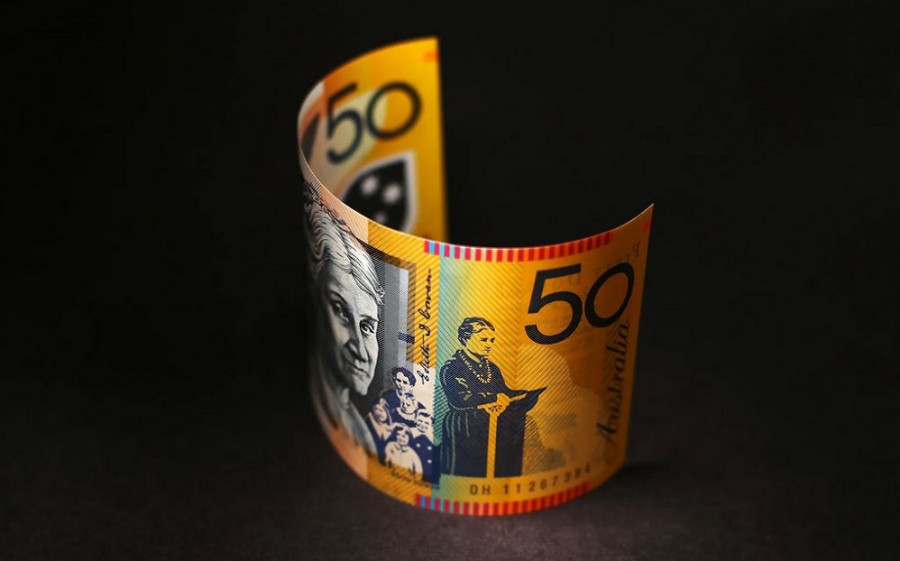The Reserve Bank of Australia (RBA) followed the most expected scenario at its May meeting, cutting the interest rate by 25 basis points. However, AUD/USD sellers remain vulnerable due to the overall weakness of the U.S. dollar.
At the conclusion of its May meeting, the Reserve Bank of Australia implemented the base and most anticipated scenario, lowering the interest rate by 25 basis points—from 4.10% to 3.85%. This marks the second rate cut in the current cycle, after the central bank began easing monetary policy parameters in February.
It cannot be said that the outcome of the May meeting was a foregone conclusion. While most analysts indeed predicted a 25-basis-point rate cut, citing that the trimmed mean CPI had, for the first time since Q4 2021, returned to the target range, not everyone agreed that the RBA would adopt a dovish course—especially given the continued tightness in Australia's labor market.
The April report showed a surge of nearly 90,000 jobs, following a 36,000 increase the previous month. This strong employment growth pushed the employment-to-population ratio to 64.4%, just shy of the record high of 64.5% recorded in January. RBA officials (in particular, Deputy Governor Andrew Hauser) have repeatedly stated that labor market tightness "poses a challenge for inflation." Moreover, the latest inflation report was rather mixed: headline CPI in Q1 accelerated to 0.9%, after holding at 0.2% for the previous two quarters.
Nevertheless, the Reserve Bank of Australia interpreted the situation differently and exerted pressure on the national currency. In its accompanying statement, the regulator noted that last month's data "provided further evidence that inflation continues to decline and inflationary risks have become more balanced."
RBA Governor Michele Bullock echoed this rhetoric at the concluding press conference. According to her, the Board is ready to take further steps to ease policy "if warranted by economic conditions." While somewhat vague, the market interpreted this quite clearly—as a signal of further monetary policy adjustments ahead.
Bullock also noted that upside inflation risks have diminished "given recent international developments." Clearly, this refers to the temporary trade truce between the U.S. and China, where both sides mutually reduced tariffs by 115% and agreed "to agree."
Overall, the RBA Governor's rhetoric was decidedly dovish. She stated that the regulator is confident it can keep core inflation within the target range ("there are all the necessary conditions for this"), and therefore, the rate cut decision was "absolutely right and justified." Furthermore, Bullock revealed that the Board had considered three possible scenarios: maintaining a wait-and-see stance, cutting rates by 25 basis points, and a 50-point scenario. However, arguments in favor of a 50-basis-point cut "were not the strongest among the options."
As for the future of monetary easing, Bullock essentially assured reporters that this will not be the last rate cut this year. She said the regulator will take further action "if inflation continues to decline." However, how long or aggressive the easing cycle will be remains unclear. Bullock limited herself to general remarks, saying it is currently unknown whether the series of cuts will be prolonged or where the interest rate will eventually settle.
Thus, at its May meeting, the Reserve Bank of Australia delivered the most expected outcome and took a clearly dovish stance, signaling further interest rate cuts.
The Australian dollar reacted negatively to the outcome of the May meeting. Additional background pressure came from political developments in Australia, where the opposition coalition fell apart (the National Party is no longer allied with the Liberal Party).
In response to all of these developments, the AUD/USD pair retreated from the upper boundary of the 0.65 zone and dropped toward the lower 0.64 range, specifically to the support level of 0.6420 (the middle line of the Bollinger Bands indicator on the D1 timeframe). However, the bears failed to break through this price barrier with momentum. This is a troubling sign for AUD/USD sellers, indicating the fragility of their position—primarily due to the overall weakness of the U.S. dollar.
In my view, traders will quickly price in the results of the RBA's May meeting and shift their focus to the greenback, which remains under pressure from several fundamental factors. First, traders reacted to the loss of the United States' flawless credit rating for the first time since 1917—Moody's downgraded the U.S. sovereign rating from Aaa to Aa1. Among the three major credit rating agencies (Fitch Ratings, S&P), Moody's was the last to maintain the top AAA rating for U.S. debt. Second, the greenback is being weighed down by a prolonged pause in trade negotiations between Washington and Beijing.
Amid such a fundamental backdrop, the U.S. Dollar Index has returned to the 99 area today, reflecting the general weakening of the currency.
Given this significant factor, long positions on AUD/USD appear reasonable, as the bears failed to break even an intermediate support level at 0.6420. The target for the upward movement remains 0.6490 (the upper line of the Bollinger Bands on the daily chart). A breakout above this resistance level would pave the way for buyers to reach the 0.65 zone.













